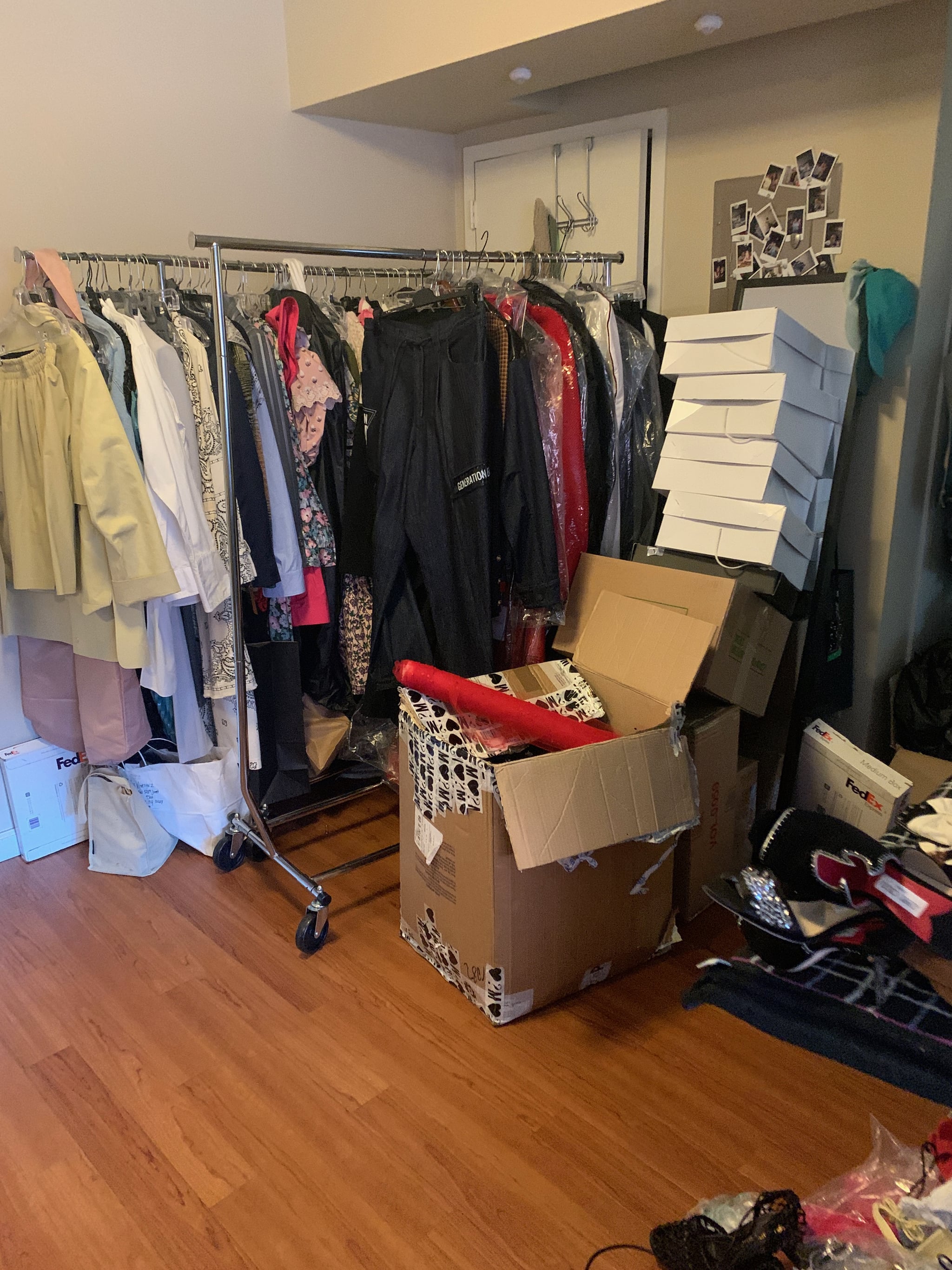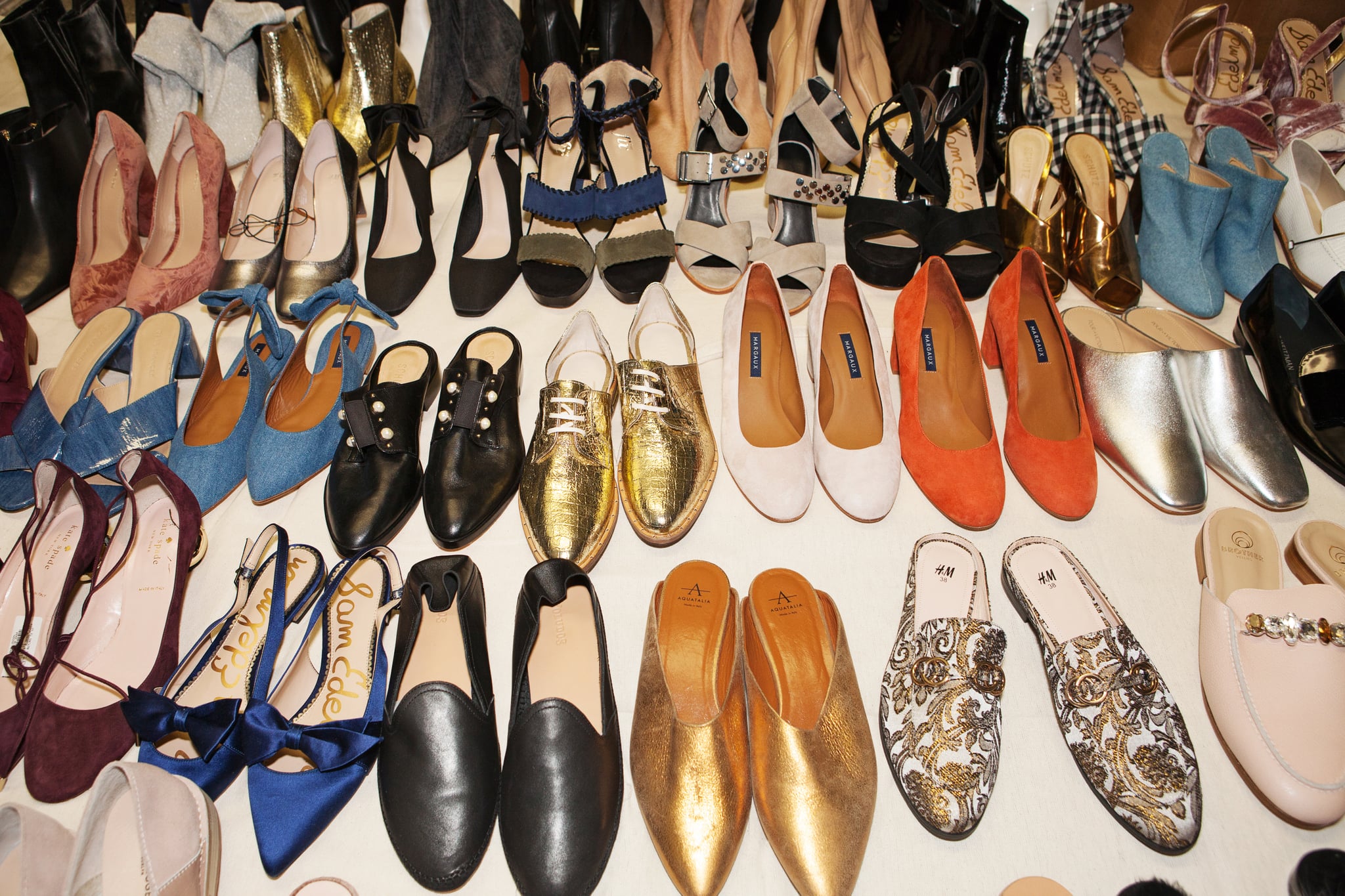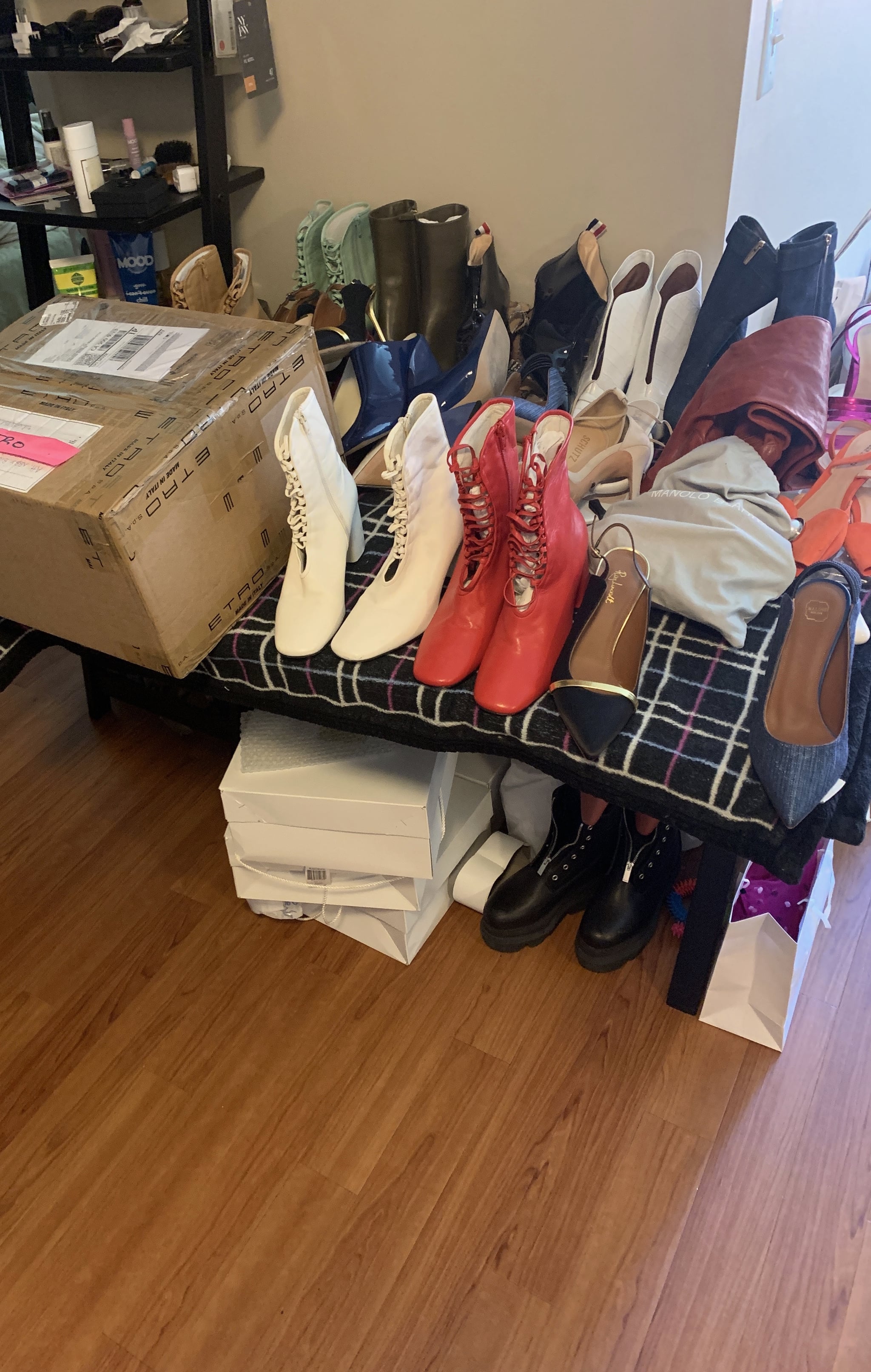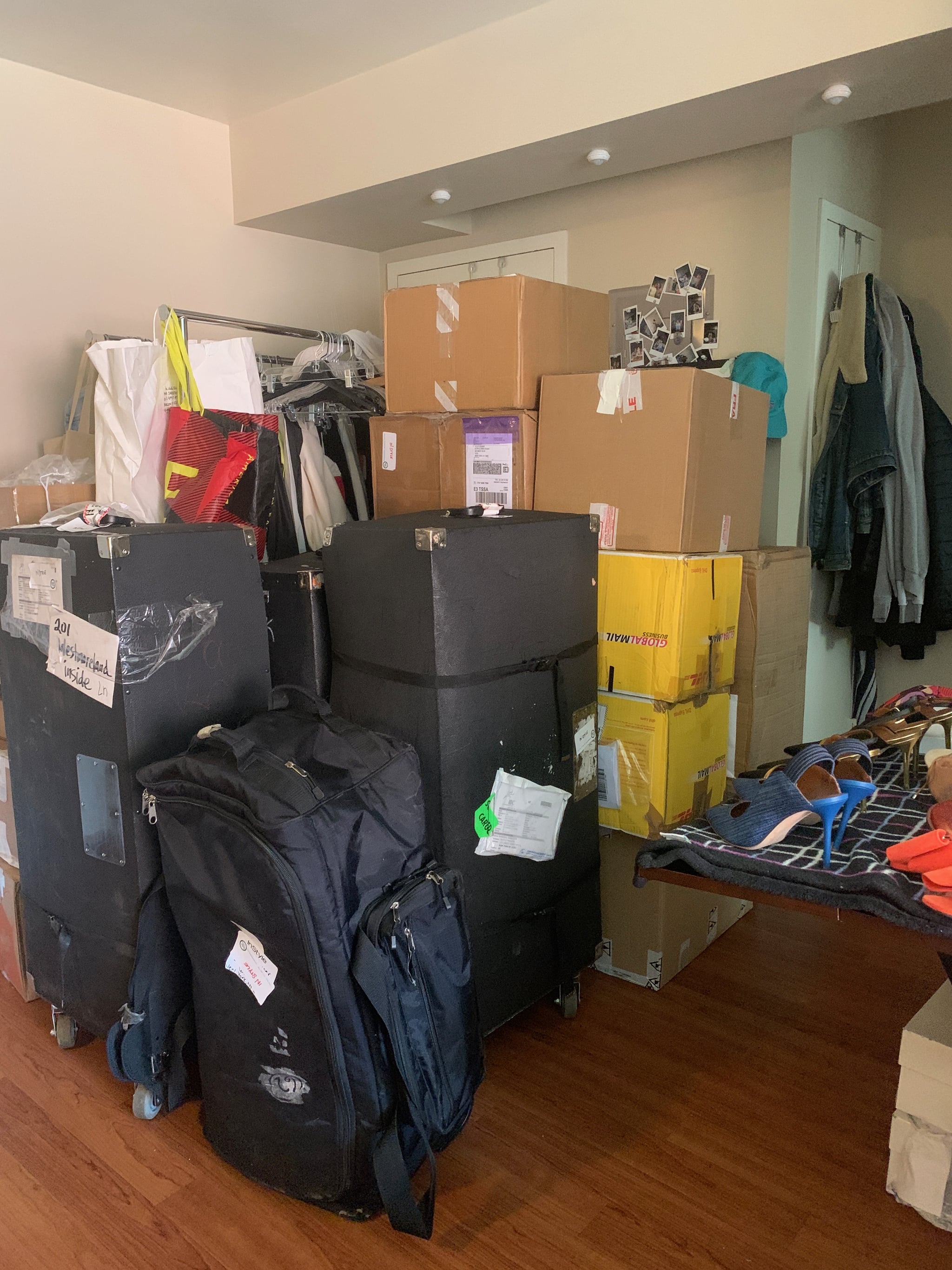How COVID Affects Fashion Assistants
Fashion magazines are fueled by large-scale photo shoots, features with high-profile celebrities, and coverage of red carpet events. A lot of this isn’t possible without the team behind the scenes: the fashion assistants. These assistants call in and organize all products that are then placed on talent for said events or cover shoots. The products — apparel, accessories, shoes, fine and costume jewelry, and extras — are housed in a fashion closet near the fashion department. It’s common for the closet to be the smallest room in the office — leaving fashion assistants and interns to create jigsaw puzzles to make sure everything fits and is organized for impromptu run-throughs or visual displays of upcoming shoots for the stylist to review.
When I was a fashion assistant, I remember being blocked in by trend boards, racks, and trunks for outgoing shoots, making it hard to communicate across the room to the other fashion assistant. That was the norm — just a part of what we endured in order to become editors. I often questioned the system, wondering if it set us up to fail. Extra room or storage space and a more streamlined calendar definitely would have made life a little easier.
When COVID-19 hit, and as it continues to make an impact, glossies have had to adapt. Fashion magazines are putting out content during the coronavirus, but at what cost to their employees — especially the fashion assistants who are now running the show from their bedrooms? Some magazines have so many clothes that one assistant houses trunks or extras, while another holds the runway looks. A friend of mine who works at a popular magazine and lives in the same building as her boyfriend has been sleeping at his place the past few weeks because the racks have completely taken over her small New York City studio apartment.

To get the full scoop on life as a fashion assistant in a pandemic, I reached out to three fashion assistants: one who works at a newspaper, a fashion assistant for a men’s publication, and a freelance fashion assistant for men’s and women’s publications. All assistants have chosen to remain anonymous, so for the purpose of this story, I’ll refer to the newspaper employee as Ashley, the menswear assistant as Jane, and the freelance assistant as Sebastian.
While working from home, she takes it one day at a time and understands that running a closet from her bedroom “just comes with the job” in 2020.
The Rise of the Pop-Up Closet
With the amount of volume going in and out of a fashion closet, systems have to be in place. Many publications track all samples, or items for photo shoots, through a photo system. The minute an item comes in, a photo is snapped, and it gets catalogued in a computer as a “check-in” photo, under its respective shoot. When items leave the closet — for a photo shoot or to go back to the sender — it gets photographed again and is labeled as a “check-out” photo in the filing system.
In a perfect world, all items sent for a shoot would come in, get photographed, go through a run-through, get packed up for the shoot, return to the closet to make sure everything is accounted for, and then go back to the brands that sent them. However, if multiple shoots are going on at a time and an item hasn’t been used for a past shoot, it gets “transferred,” increasing its life in the closet.
“I hate the word ‘transfer.’ It’s the worst word in fashion,” Sebastian said. “At the end of the day, you want to do a full return. Once something comes in from one photo shoot, your mentality is like, OK, this is going to leave my house, I’m not gonna have to deal with this. This is all done,” he explained to me as he looked around his apartment at a large rack labeled “transfer.” “But then they transfer it to another shoot, and you’re like, crap, I’m only doing a half return now, and now I gotta sit with all this product for longer.”
“I’m receiving upwards of 50 packages or garment bags a day — I think it’d be weird if I wasn’t overwhelmed,” Ashley told me as she discussed how she’s rationalized her emotions. She enjoys fashion, and seeing it firsthand in her home has been a nice change. While working from home, she takes it one day at a time and understands that running a closet from her bedroom “just comes with the job” in 2020.
Taking Work Home With You
Fashion assistants are used to long hours, often showing up as early as 4 a.m. to set up for a photo shoot and staying past 7 p.m. on the days an issue closes. Usually long days come with an expensed dinner, a prepaid car ride home, happy hour with your coworkers, or just a nice night at home, decompressing. The issue with fashion assistants running a fashion closet from their bedrooms is just that it’s in your bedroom. There’s no separation, no perks, and no work/life balance.
“It’s really hard to find the vibes when your house is covered in work. Like, where’s the Zen?” Jane told me as I FaceTimed her while she ate a sandwich in the only open space of her kitchen.
“The only issue I’m having, four months in, is learning how to delegate when I’m going to do something and when I’m not because there’s so many samples coming in from my apartment,” Sebastian explained. Like many assistants, he’s inundated with product and coordinating high-volume projects.
“It’s really hard to find the vibes when your house is covered in work. Like, where’s the Zen?” Jane told me as I FaceTimed her while she ate a sandwich in the only open space of her kitchen. How do you create boundaries when your manager knows you have the tools to work at any time?
Fashion Assistants Are on Their Own
Most fashion publications have one fashion assistant to handle all categories: ready-to-wear, denim, jewelry (fine and costume), shoes, extras, and accessories. At publications with bigger budgets — and space — you’ll see multiple assistants, or at the very least, one for apparel and one for accessories.
A huge part of my success in the fashion closet was thanks to the interns and freelancers who helped me. When working on a cover shoot, we would often have anywhere between 16 to 30 wardrobe trucks filled to the brim with products to get sent to a photo shoot. To pack the trucks, all apparel had to go in garment bags, all hats in hat boxes, all delicates in bubble wrap, and all shoes and remaining accessories in plastic poly bags. You’d then seal the trunks, and if you were lucky, a courier employee would meet you at the freight. If it was past 7 p.m. — the time the building freight closed — you’d have to lug all 30 trunks down several elevators, out the lobby building, and into the courier’s van.
“They [cover] one way, and then I cover the other way on the team’s budget,” Sebastian told me as he explained the logistics of receiving and returning samples. “I also had to buy a printer,” he added. To ship samples back that were sent outside of New York, he was rushing to FedEx or UPS before they closed to make sure packages made it on time. The printer now helps him streamline his day: “It’s easier for me to organize FedEx pickups versus me dropping them off daily. So now I can print the shipping labels. It’s cut hours off of my day.”
“I get emails all day,” Ashley told me as I heard her typing across the receiver. “It feels more intense than the office.” For Ashley, she is the only assistant at the newspaper and is responsible for two editors. She often feels like a lot of her day is spent catching her bosses up with her progress, even though it rarely varies day to day. She’d prefer that time could be spent organizing her racks and making sure everything is ready to get sent out. Fantasizing about the assistance her interns provided, she said, “I never knew how good I had it.”
A Job Well Done
We’ve all had or have that one coworker who sneakily gets by, doing less work than the rest of us, but since it’s a team effort, they get the praise, too. The fashion assistants I spoke to all agreed the biggest plus of life outside the office are the long-awaited accolades for a job well done. “I’ve been with the company for two years,” Jane said. “Now that they know how good I am, I’m hoping for a promotion upon return.”
Every publication forms relationships with fashion houses; it’s how they are able to get product for their shoots, and they guard these relationships tightly. Multiple mis-returns or late returns, damage to fragile items, and disrespectful attitudes can end these relationships, but if a brand speaks highly about you back to the magazine, it’s everything. It makes all the hard work and drama worth it. “It’s really great to hear,” Sebastian said, reflecting on an email a Louis Vuitton rep sent applauding him. “When the brands thank you, it shows the magazine you know what you’re doing, which for me, as a freelance assistant, is essential.”
Still, there’s a distinct kind of pressure these assistants face. “There’s no room for mistakes when the samples are coming into your place,” Jane told me as she longed for the help and extra set of eyes she had in the closet to keep product from going missing. “It’s not like you go to a fashion closet and it’s been a week or two and an item gets transferred to another shoot. In a transfer, you might not know where it is, but you know it’s coming back. But now, it’s in my home, and if it’s missing or misplaced — it’s on my head,” she said.
Image Source: POPSUGAR Photography / Anonymous





